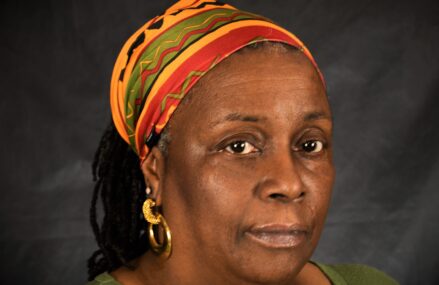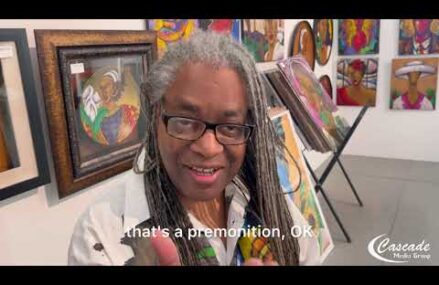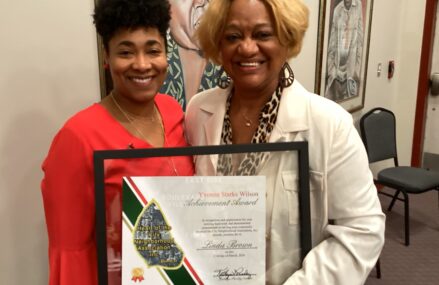Simone was born Eunice Kathleen Waymon on February 21, 1933, in Tryon, North Carolina. The sixth of eight children[9] in a poor family, she began playing piano at the age of three or four; the first song she learned was “God Be With You, Till We Meet Again”.[10] Demonstrating a talent with the piano, she performed at her local church. Her concert debut, a classical recital, was given when she was 12. Simone later said that during this performance, her parents, who had taken seats in the front row, were forced to move to the back of the hall to make way for white people.[11] She said that she refused to play until her parents were moved back to the front,[12][13] and that the incident contributed to her later involvement in the civil rights movement.[14] Simone’s mother, Mary Kate Waymon (née Irvin, November 20, 1901 – April 30, 2001),[15] was a Methodist minister and a housemaid. Her father, Rev. John Devan Waymon (June 24, 1898 – October 23, 1972),[16] was a handyman who at one time owned a dry-cleaning business, but also suffered bouts of ill health. Simone’s music teacher helped establish a special fund to pay for her education.[17] Subsequently, a local fund was set up to assist her in continued education. With the help of this scholarship money, she was able to attend Allen High School for Girls in Asheville, North Carolina.
After her graduation, Simone spent the summer of 1950 at the Juilliard School as a student of Carl Friedberg,[18] preparing for an audition at the Curtis Institute of Music in Philadelphia. Her application, however, was denied. Only 3 of 72 applicants were accepted that year,[19] but as her family had relocated to Philadelphia in the expectation of her entry to Curtis, the blow to her aspirations was particularly heavy. For the rest of her life, she suspected that her application had been denied because of racial prejudice. Discouraged, she took private piano lessons with Vladimir Sokoloff, a professor at Curtis, but never could re-apply due to the fact that at the time the Curtis institute did not accept students over 21. She took a job as a photographer’s assistant, but also found work as an accompanist at Arlene Smith’s vocal studio and taught piano from her home in Philadelphia.[18]
1954–1959: Early success
In order to fund her private lessons, Simone performed at the Midtown Bar & Grill on Pacific Avenue in Atlantic City, New Jersey, whose owner insisted that she sing as well as play the piano, which increased her income to $90 a week. In 1954, she adopted the stage name “Nina Simone”. “Nina”, derived from niña, was a nickname given to her by a boyfriend named Chico,[18] and “Simone” was taken from the French actress Simone Signoret, whom she had seen in the 1952 movie Casque d’Or.[20] Knowing her mother would not approve of playing “the Devil’s music”, she used her new stage name to remain undetected. Simone’s mixture of jazz, blues, and classical music in her performances at the bar earned her a small but loyal fan base.[21]
In 1958, she befriended and married Don Ross, a beatnik who worked as a fairground barker but quickly regretted their marriage.[22] Playing in small clubs in the same year, she recorded George Gershwin’s “I Loves You, Porgy” (from Porgy and Bess), which she learned from a Billie Holiday album and performed as a favor to a friend. It became her only Billboard top 20 success in the United States, and her debut album Little Girl Blue followed in February 1959 on Bethlehem Records.[23][24][25] Because she had sold her rights outright for $3,000, Simone lost more than $1 million in royalties (notably for the 1980s re-release of her version of the jazz standard “My Baby Just Cares for Me”) and never benefited financially from the album’s sales.[26]



